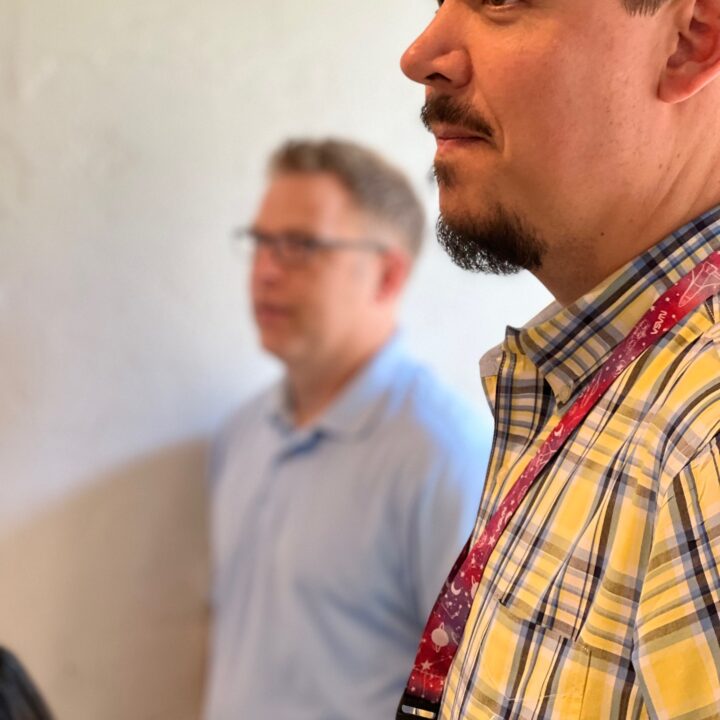It Takes Good Data to Do Good.
Many of the world’s vast and complex social problems, often referred to as ‘wicked problems,’ exceed the capacity of any one individual or group to solve them. These wicked problems shift and change, adapt to the local environment, and are insidiously difficult to combat. One approach to mitigating wicked problems is through collaborative social action.
Cue mission-based organizations. Many organizations form collaboratives and coalitions to align vision, shape action, and share information with the goal of amplifying the systemic impact of their work. Data is a key ingredient in many collaborative action methodologies as a tool that helps direct resources, clarify opaque situations, and provide supporting information to action plans.*
*It’s important to note that these complex problems often require collaboration across the public, private, and third sectors. While our focus is on how mission-based organizations can use data as an effective tool, many other factors contribute to effective intervention programs.
What Makes “Good Data,” Well, Good?
What is ‘good’ data? Is there such a thing as ‘bad’ data?
There is debate on the “neutrality” of data (i.e., facts and figures). Generally, even if data itself seems un-opinionated, the context it sits within often comes with assumptions, hidden assertions, or other biases that can frame a story or insight.
Untangling the complex interconnections related to wicked social problems is difficult under optimal conditions. This becomes an even greater challenge with ‘bad’ data. When we talk about ‘good’ versus ‘bad’ data, we’re really talking about the quality more than the inherent value of the information.
Let’s compare the two extremes of ‘good’ and ‘bad’ data:
Characteristics of ‘Bad’ Data: Unreliable, inconsistent, inaccessible, erroneous, incomplete, ‘arrives late’
By this standard, the majority of data circulating globally would be considered ‘bad’ data. This doesn’t necessarily mean that the collected data is inherently flawed. Instead, data is often incomplete, inconsistent, or inaccurate due to its primary purpose of facilitating a specific workflow or organizational process. Regardless, most data fails to be utilized efficiently. And this doesn’t just have informational consequences; e-waste translates to real-world pollution, waste, and environmental degradation.
What does this mean in the context of social impact work? Bad data doesn’t give us a full or accurate story; it gives a partial one, a biased one, or none at all. The data being collected may misrepresent the clients we serve. We may be collecting incomplete or redundant information, or even attempting to answer the wrong questions. It can simply arrive at the wrong time, too, resulting in a lost opportunity to take action. Or it may be useful, complete, accurate, and timely data, but inaccessible to the people who need it to make decisions.
Characteristics of ‘Good’ Data: Accurate, reliable, well-organized, accessible for easy comprehension, regularly updated, comprehensive
Most data that is good is intentionally designed that way. Data collection systems and insight pipelines may not start as highly effective or sophisticated, but can become that way through a commitment to data governance, and a concerted effort to evaluate, learn, and improve data practices regularly.
Data becomes accurate and reliable when it is organized in a manner that is understood within the context in which it is generated, reflects the “real world” as closely as possible, and is functional for those who are assigned the task of working with information, knowledge, and wisdom. A well-organized system comes from a continuous cycle of planning, evolution, adaptive insight-seeking, and skilled leadership. Quality data does not necessarily require a complex or expensive system; in fact, some manual systems can prove to be more functional and impactful than their digital counterparts. You have good data when you can find and use it effectively at the moment you need it.
It’s important to make complex information accessible and understandable for various stakeholders. Using effective visualizations and communication methods enables individuals and organizations to identify patterns, trends, and outliers quickly, paving the way for data-informed decision-making. Regular updates are essential to maintain the quality and relevance of data. As circumstances change, data must be continuously refreshed to reflect the most recent context.
When these essential components align, a powerful synergy is created, resulting in a system that efficiently delivers key insights directly to the individuals and communities who need them most, thereby empowering them to make informed decisions and enact positive change.
The Grey Area
There is plenty of data that falls somewhere between “good” and “bad,” and no one should expect to achieve perfection in their data collection and insight generation. Most data is not entirely good nor entirely bad, and it can take an incredible amount of work to transform disorganized facts and figures into something useful. The goal is to align your capabilities with your data-informed objectives and create actionable plans to achieve them.
Why Do We Need It?
Good data can transcend the limitations of social impact work by providing us with necessary information, knowledge, and wisdom when utilized in the right way at the right time.
The insight we can unlock with good data can help organizations to avoid wasting precious resources on ineffective strategies or poorly directed resources. Let’s look at some of the ways that good data can help us tame wicked social problems.
Centering Local Knowledge
While we can generalize about common challenges we all relate to or experience, wicked problems such as poverty are locally sensitive to the conditions in which they occur.
Detailed local information on the clients we serve and the conditions we work within is helpful in understanding the complex factors that contribute to the problems we are looking to tame.
Data as Fuel for AI
The media craze around AI and ChatGPT in early 2023 underscored a seismic shift in public perception and adoption of AI technologies. Generative artificial Intelligence in particular made major strides in predictive modeling, automation, and content creation based on the new technologies arriving. Data is the lifeblood of AI, serving as its essential fuel. Without a rich and diverse dataset, AI algorithms lack the necessary information to learn, understand patterns, and generate informed decisions. Data enables AI models to elevate insights, adapt to new challenges, and continually improve their performance. As the volume and quality of data increase, so does the potential for AI to revolutionize industries, drive innovation, and positively impact our daily lives. As we consider the value of AI in enabling social impact it’s important to consider that the reliance on data also brings forth critical ethical considerations, including data privacy, security, and potential biases that can be inadvertently built into AI systems.
Enabling Collaboration
Collaborating with community partners can have incredible and exponential benefits, especially when you’re able to break down information silos and build more open access to critical community data. A shared measurement system is a key enabler to improved resource targeting and service provision across systemic challenges. Balancing the tension between data utility and privacy is even easier now that we can employ privacy-protecting technologies that make it possible to answer key community questions while protecting personally identifiable information.
Providing Transparency
One of the beauties of having information is that you can then share it. Key facts and figures combined with human story helps community stakeholders stay invested in key initiatives. Data-fueled stories can help donors stay committed to your mission, understand the impact of investments, and spread awareness as evangelists for your cause. Board members can get a more complete picture of your organization’s efforts and make informed decisions that are in alignment with the priorities of on-the-ground staff.
Paving a Path Forward
Founded over a decade ago, Asemio is committed to transforming how we tackle social problems. Complex social problems require data and technology tools that evolve along with our ever-changing needs. Through the improved use of data, we can realize our potential to improve our ability to triage, diagnose, and tame these complex social issues.
Without good data, organizations risk operating in the dark, making decisions based on instinct without evidence. By harnessing good data as fuel for actionable insights, we can gain a deeper understanding of the needs we seek to address, make better evidence-informed decisions, design more effective programs, enhance accountability, and drive systemic change. With artificial intelligence rapidly changing the way that we interact with technology, it’s more important than ever before that our social infrastructure accesses the same innovations that we’re seeing in industry.
In a world where the amount of data available increases by the moment, mission-driven organizations have the opportunity to embrace the power of data-enabled innovation and unlock their full potential to create lasting social impact. If you’re looking for additional information to inform your own data and technology initiatives, check out our Data & Technology Advancement Model E-Book which includes a toolkit and guide for self-assessment.






